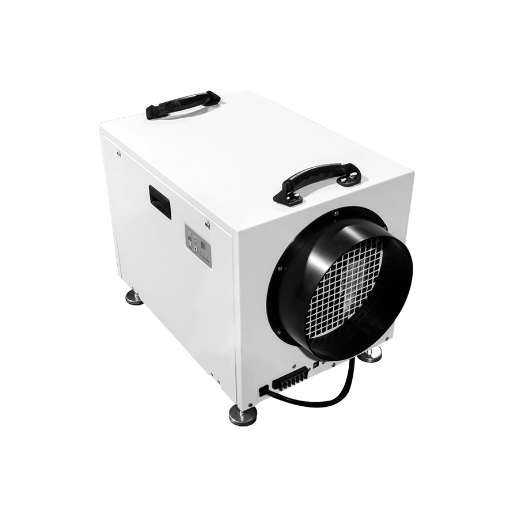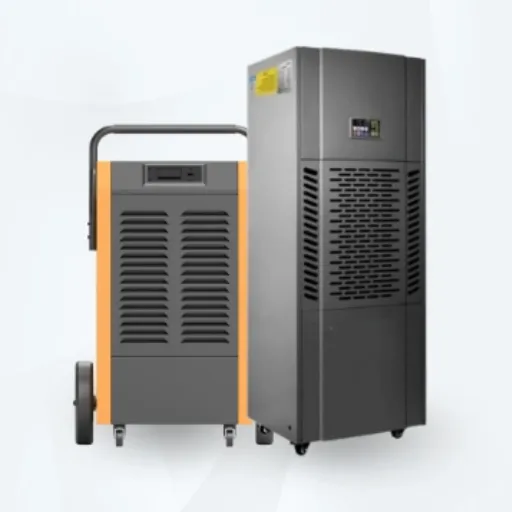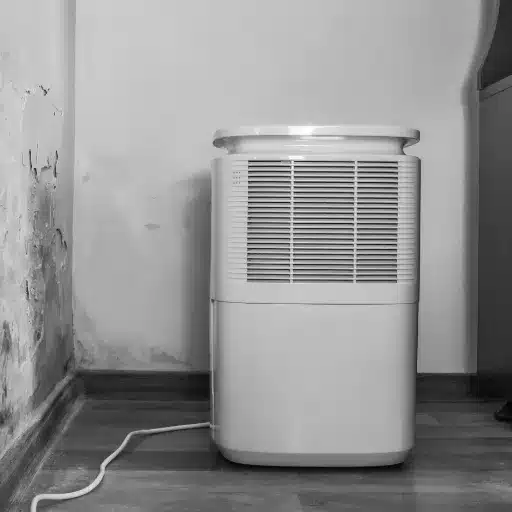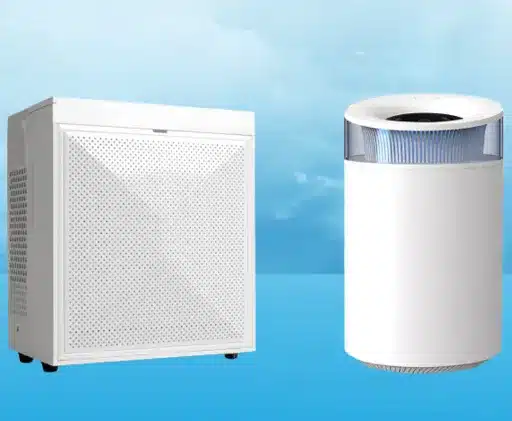Crawl space dehumidifiers play a vital role in maintaining a healthy and energy-efficient home environment, yet many homeowners are uncertain about their costs and why they are essential. Excess moisture in crawl spaces can lead to significant issues such as mold growth, wood rot, pest infestations, and even structural damage, all of which can compromise the integrity of your home. This article aims to address those concerns by providing a comprehensive understanding of crawl space dehumidifiers, including their pricing, benefits, and why investing in one can save you money in the long term. Whether you’re a homeowner seeking to protect your property or simply curious about moisture control solutions, this guide will equip you with the knowledge you need to make an informed decision.
Introduction to Crawl Space Dehumidifiers
The Purpose of a Dehumidifier in Your Crawl Space
Owing to location and limited ventilation, crawl spaces are areas of excess moisture, which can be quite problematic and yield mold growth, wood rot, and structural damage. The main function of a crawl space dehumidifier is to maintain humidity levels so that dampness poses no threat to the structural integrity of your home or the health of its occupants. By keeping relative humidity in the ideal range (generally under 60%), these devices curb moisture problems.
With higher humidity in crawl spaces, indoor air quality will further suffer since 50 percent of the air inside your house may come from the crawl space. This is where a dehumidifier comes in, as it removes excess moisture from the air, limiting allergens caused by dust mites and mold spores from entering the living areas of your home. It creates an environment beneficial to health and improves air quality.
By investing in a durable dehumidifier for a crawl space, you may save money in the long run. Controlling moisture is thus paramount if you want to avoid repairs to flooring, foundation, and insulation caused by water damage. Moreover, the dry air allows heating and cooling systems under your floor to work better.
Importance of Dehumidification for Home Health
In protecting indoor air quality, dehumidification, in general, is required to curb mold and allergen proliferation. Hence, moisture can be detrimental to a house where mold would love to grow, release harmful spores into the atmosphere, and cause serious health problems for individuals with asthma or allergies. Once the levels are kept below 60%, generally ranging between 30% and 50%, mold is unable to thrive; dehumidifiers disrupt this mold-growth condition, hence making the air cleaner.
Other than that, allergen control is greatly improved through dehumidification, since dust mites, a common allergen, thrive in highly humid conditions. A drier home environment mutes the proliferation of these tiny creatures, allowing the matching rise in respiratory well-being and comfort among the residence’s occupants. This makes dehumidifiers almost a must in regions of high seasonal humidity or during wet seasons of peak allergen proliferation.
Finally, proactive dehumidification contributes to preserving the structural integrity of an edifice as well as the endurance of its contents. Excess moisture causes wood to warp, metal components to corrode, and insulation to break down. Homeowners can thereby avert very high costs for repairs or replacements. This highlights that dehumidification is central not only to ensuring a healthier living environment but also to shielding from long-term investment of a property.
Common Issues Caused by Excess Humidity in Crawl Spaces
The excess humidity in crawl spaces is capable of causing a number of structural and environmental issues in the house. Often, mold and mildew cause damage. Such fungi require moisture to grow; they multiply rather quickly, thus making the inside air of a house dangerous to breathe in. Long-term exposure to mold spores will cause respiratory problems and allergic reactions in susceptible hosts, including those with preexisting types of asthma.
Structural damage is another threat caused by moisture. The humidity level will warp wooden support beams and floors, thus compromising the stability of houses. With more exposure to attraction, metals will rust more quickly-think of nails, fasteners, and parts of HVAC. If not attended to, this slow decay will produce further costs.
When it comes to moisture, it also attracts pests like termites, carpenter ants, and rodents, which seek damp places. These pests might be chewing away inside the crawl space on wood and insulation or setting up nests there, along with the potential to cause serious damage. Thus, controlling humidity not only preserves the structural property of a home but also ensures that it does not become a haven for pests. Dealing efficiently with dehumidification would be the right approach for a homeowner to keep such risks at bay and extend the life.
Factors Influencing the Cost of Crawl Space Dehumidifiers
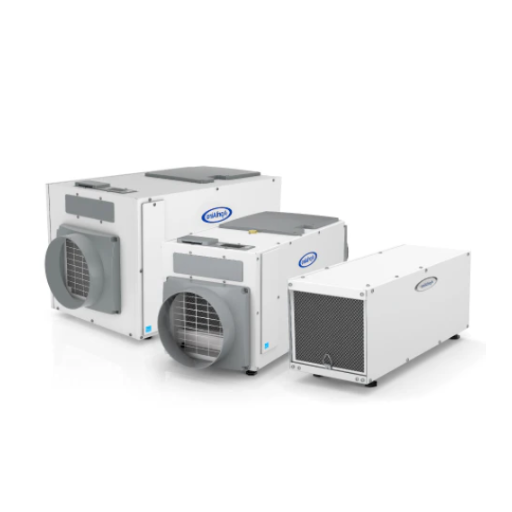
Size and Capacity Considerations
A crawl space dehumidifier’s size and capacity are key elements in determining whether it can efficiently perform and operate at a low cost under prevailing conditions. The water-pint-to-remove-per-day capacity of a dehumidifier has to be balanced with the area of the crawl space, as well as the moisture conditions. So, if a crawl space is subject to high humidity or water coming into it, then a bigger unit has to be installed so that it can handle increased quantities of water and maintain optimum conditions. Sizing between 50 and 90 pints per day is fairly usual for a crawl space dehumidifier. Hence, it is best to have one that has an adequate capacity so that it will not have to run almost continually at full capacity and cause the equipment to wear out very quickly.
Also, dehumidifier size goes into consideration for being fitted into the crawl space without making accessibility or maintenance difficult. A very small unit may seem suitable for restricted space, but capacity must never be sacrificed for size. Designs of professional-grade models are often space-efficient and highly effective, with features such as a low profile while still creating high moisture removal rates. Some of the most advanced models even provide installation options, letting you place them in tight areas without compromising performance.
Last but not least, energy efficiency also plays an important role when purchasing a dehumidifier. Thus, it is very common to see such units bearing the Energy Star sign. Depending on the moisture content in the air, a bigger dehumidifier will find some use; if the moisture content is high, then it will operate more efficiently and keep energy usage minimum. So the way the size, capacity, and energy efficiency of the dehumidifier are chosen for a house significantly affects the outcome of humidity control, along with long-term savings. Homeowners should then evaluate the cubic footage of the crawl space and climate conditions, as well as consider if water vapor barriers already exist, prior to making a choice.
Energy Efficiency Ratings and Their Impact
Energy efficiency ratings are significant markers that help consumers evaluate the energy consumed by a device relative to its performance. For dehumidifiers and similar appliances, they project long-term operating expenses and environmental impact on customers, which are necessary decision-making factors. Here is an outline of the five basic energy efficiency ratings and what they imply:
- Energy Star Certification: Energy Star-rated appliances have to comply with a very strict set of energy efficiency standards drafted by the United States Environmental Protection Agency (EPA). Energy Star models of dehumidifiers use 15% less energy than standard models, thereby lowering utility bills and carbon emissions.
- Energy Factor (EF): The Energy Factor (EF) measures the volume of water removed in liters and the energy used in kilowatt-hours. Thus, a higher EF denotes more efficiency: For instance, a dehumidifier with an EF of 2.0 would be more cost-efficient over time, removing 2 liters of moisture per kWh.
- Integrated Energy Factor (IEF): IEF is a more recent term used to describe dehumidifiers after a change in federal standards. It accounts for differing operating conditions and is thus considered a more all-encompassing term for performance and efficiency; hence, units with higher IEF numbers are more energy efficient and usually are designed to perform efficiently over a large range of humidity levels.
- Bivariate Seasonal Energy Efficiency Ratio (SEER): The cooling output divided by the total electric energy usage over the season gives one the easiest indices to estimate the efficiency of combined dehumidification and temperature control systems. The benchmark of every cooling system is the SEER, though it is sometimes used for an integrated dehumidifier-HVAC apparatus.
- Standby Power Consumption: In many cases, during energy analyses, these are overlooked. A dehumidifier with lower standby power requirements will guarantee minimum energy consumption when the unit is not in an operational state. It gives room for just another opportunity for energy savings.
Understanding these ratings and their impact gives consumers the ability to select a model best suited for their humidity control and energy-saving needs. Also, by paying attention to these ratings, the consumer stands to save greatly on energy bills and lessen the ecological footprint as time passes.
Features That Affect Price: Pumps, Drains, and More
In evaluating dehumidifiers, many advanced features can greatly affect the overall price of a given unit. An internal pump is an option that is often expensive, as it allows the appliance to dump the water either vertically or an extended distance-this is a fabulous feature for basements or areas that have limited drainage options. Another thing is continuous drainage, wherein a special hose connection is provided for draining moisture away continuously, without much need for the user to do anything. Units having fine-grade or HEPA filters will cost more, as they offer air-cleaning benefits, thus trapping allergens or fine particles.
What other factors included are high-end humidity sensors, compatibility with smart-home features, etc. Maybe only hygrometers with measurement precision or real-time humidity monitoring can offer better performance, as they adjust performance standards according to current humidity levels. Smart-home integration adds some extent to the cost but also very convenient to users who value industry-grade automation, bringing much fame to automation.
They look at all these features and their practical uses, and so buyers assess their requirements, putting the admissibility of function versus cost on this ratio. Therefore, an informed consumer shall surely select a device that, apart from fulfilling his specific desire to manage humidity, also fits his preference concerning technology and operation.
Price Ranges for Crawl Space Dehumidifiers
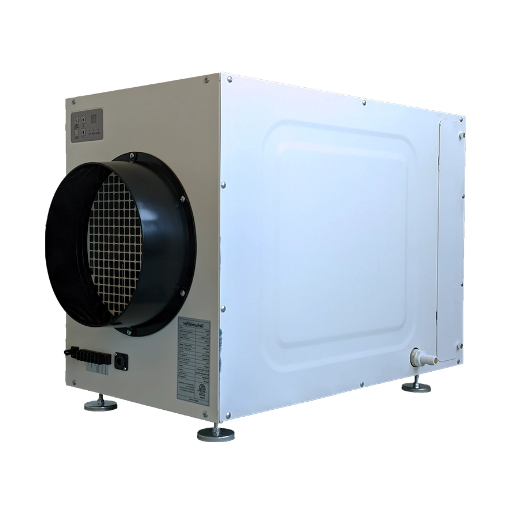
Budget-Friendly Options for Cost-Conscious Homeowners
For those homeowners who seek a balance between performance and affordability, there are numerous crawl space dehumidifiers that offer reliable moisture control without breaking the bank. These units deliver essential functions, lacking simply the more technical, higher-end features. For instance, the more economic systems will generally have a dehumidification capacity of maybe anywhere from 50 to 70 pints per day, which is ideal under normal environmental conditions for small to medium crawl spaces.
Among the devices that fall in this category are more energy-saving-efficient-and-durable ones, with an Energy Star rating to ensure low power consumption. From a materials standpoint, they are intended to last: these materials resist corrosion and surface wear, even when exposed to humidity levels beyond specs. The initial investment can range from $200 to $500, but the amount saved owing to energy efficiency can be much higher than that as far as operational expenses go.
Most budget units omit some of the more premium features, such as smart controls or Wi-Fi connectivity; at least these are not essential: they all offer adjustable humidity set points, an option for either continuous drainage or water tank drainage, a good size for easy installation and maintenance. Sticking to these essentials allows the cheap models to serve homeowners who are economically minded and also provide a reasonable level of performance and reliability for standard-use scenarios.
Premium Models: What Makes Them Worth the Investment?
Premium dehumidifiers are known for their superior technology and very fine construction. Hence, buyers looking for higher performance and reliability consider them worthy investments. They often have very efficient compressors, so they can extract moisture from an environment fast, especially when the humidity is high. These premium units also have precision sensors to allow for accurate humidity monitoring and ensure that they run efficiently.
While the budget alternatives might not always have these added smart features, these premium units offer app integration for remote monitoring and control via Wi-Fi. This allows them to tweak settings or get alerts for maintenance or performance updates through their smartphones. From a durability standpoint, many high-end models are built with corrosion-resistant materials and components designed for long-term use in wet environments.
Furthermore, such devices are generally quieter, employing all sorts of great noise-reduction designs noticeable advantage if people intend to put it in a bedroom or living area. These models, being more expensive upfront, do pay off over time with increased life spans, energy efficiency, and performance, thus saving on operational cost and replacement costs. Premium models thus make a very compelling choice for any homeowner looking for a dehumidifier that combines high efficiency, reliability, and contemporary convenience.
Additional Costs to Consider
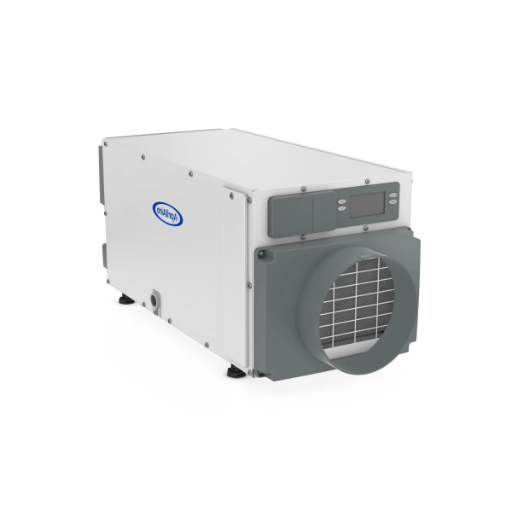
Installation Expenses: DIY vs. Professional Help
While DIY installation is less costly, it is more challenging to execute. Professional help, on the other hand, affords proper installation but comes at a higher labor price.
|
Key Point |
DIY |
Professional |
|---|---|---|
|
Cost |
Low |
$50–$120/hr |
|
Tools |
Basic |
Advanced |
|
Time |
Longer |
Shorter |
|
Skill |
High |
Moderate |
|
Warranty |
Risk of void |
Maintained |
|
Quality |
Variable |
Guaranteed |
Warranty Services: What to Look For
While considering the warranty services for any product, some key factors require consideration to obtain assistance and value over the product’s life cycle. Firstly, check for the period and other conditions, as the standard one would usually have 1 to 5 years of warranty; additional period options are also there to extend protection. Other than specifying major components and critical failure protection, this warranty should also cover issues such as compressor failure for a refrigeration unit or motor part failure in a mechanical system.
Secondly, the issue arises on how repair vs. replacement is handled by the manufacturer. Some warranties assure only repairs, while others would replace if not repairable. In the same way, availability of authorized service centers is another important consideration as one with a broad network for service would ensure more convenience and faster turn-arounds for maintenance or repairs.
Inclusion of preventive maintenance under the warranty remains a key factor. This is a highly significant factor for technical systems if inspections are performed at regular intervals such as every 12–24 months, thus contributing to the change in performance. Check if the warranty is for parts, labor, or both, as this can greatly affect repair costs once outside warranty terms.
Finally, search for transparency in the terms and conditions. Hidden exclusions or limitations can negatively affect any real-life application of the warranty. Taking all these into consideration, one can opt for a warranty service that fits the technical complexity of their product and their long-term requirements.
Choosing the Right Crawl Space Dehumidifier
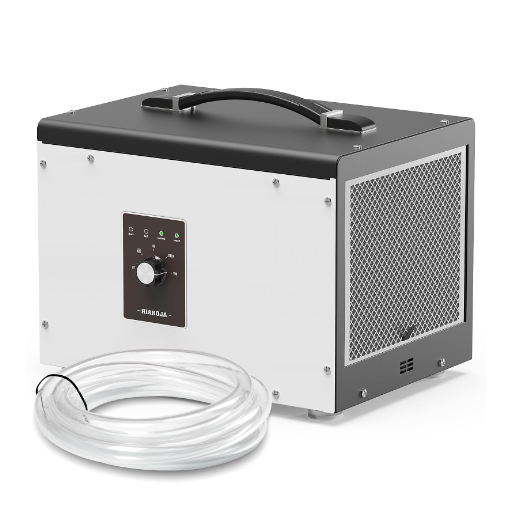
Assessing Your Specific Needs Based on Climate
When assessing the need for crawl space dehumidification in correlation to climate, I first look at the humidity levels prevailing in my region. If I reside in an area of persistently high humidity, ehumidification becomes the most important means for curbing most moisture-related problems, such as mold, mildew, staining, and structural damage. Dehumidification has therefore often meant the installation of a large-capacity unit. In drier climates, however, natural dryness may lessen the need for a big dehumidifier, depending on seasonal variations caused by rain or water ingress from downpipes or a plumbing leak.
Next, I factor in the exact environmental factors of my house-so to speak, especially those of the crawl space. To illustrate, I measure the temperature fluctuations throughout the year and observe how much condensation really forms in the space. Since such cool temperatures can impair the functional ability of some dehumidifiers, I will make sure that if my area has cold seasons, any units I choose will be those that perform well at low temperatures. Among other things, insulation and vapor barriers on the crawl space will determine the type of dehumidifier needed. Factors that work hand in hand to keep the moisture balanced for the best long-term effect from the dehumidifier.
That is why the weather conditions and how these impact the ventilation in the residence are always taken into consideration. In such areas where hurricanes or sudden temperature fluctuations can take place, elevated moisture levels occur with rapid or fast atmospheric changes that require a responsive and fairly strong dehumidification system. Having this factor in mind, when choosing a dehumidifier, I can best serve the equipment in this particular weather while allowing the structure of the house to be well-maintained and preserving good air quality inside.
Determining the Appropriate Size for Your Home
Selecting a dehumidifier of an appropriate size will help promote performance and energy efficiency. The size of the dehumidifier has two main factors to consider. In the first, it depends on the square footage of the area requiring dehumidification, and in the second, it depends on the severity of the moisture problem. Generally, dehumidifiers are rated according to how much moisture they can absorb in pints per day (PPD). Areas with high humidity levels or frequent condensation may require a 50-70 PPD unit, whereas areas that are only moderately damp will need a 30-50 PPD unit.
Begin by determining the square footage of the space by taking measurements. For anything less than 500 square feet, generally, a smaller capacity unit suffices; however, for bigger spaces or multi-room setups, think about units with a higher capacity rating. Add in the specific environmental considerations of your home, such as basements that remain damp or places with restricted ventilation-limited airflow, given that these issues will heavily tax your dehumidification setup.
For exact sizing purposes, specification charts given by the manufacturer should be referenced, which commonly link square footage to humidity level to suggest unit capacities. The analytical approach will contribute not only to efficiency but to maximizing the system’s ability to keep with ideal indoor air quality and to avert moisture hazards.
Personal Preferences: Features and Functionality
The choice of the dehumidifier depends on specific features suited to one’s needs that increase ease of use and effectiveness. The automatic humidity sensor or hygrometer is, among many features, the most important to consider. It allows the machine to keep checking on the indoor humidity level and alter its working conditions accordingly, thereby ensuring the best air quality without manual intervention. Furthermore, a system having a programmable timer enables the user to select their working schedule, thereby saving energy and running when needed.
Another major issue is the continuous drainage system. Smaller units usually require manual withdrawal of water from the tank, but larger or more advanced units hook onto an outside hose or drain to ensure continuous operation without having to be watched at all times. In addition, such newer units will come with digital controls and displays of high usability where one can set with pinpoint accuracy: speed of the fan, humidity level, and mode of operation. Often, these controls have remote or smartphone app integration for the unprecedented ease of usage and control anywhere.
Advanced filtration systems are an added feature that is remarkable in any high-quality dehumidifier. These filters assist in eliminating allergens like dust, pollens, or even mold spores from the air, supporting a healthy indoor environment. These filters may be plucked out for cleaning or replacement, which guarantees effectiveness over time and also ensures low maintenance. Another necessary feature to have is the built-in defrost mechanism, particularly for those living in colder areas, as it releases frost formation on the coil, thus guaranteeing that the system runs efficiently all year round. This, in conjunction with the latest technology, sets the stage whereby the system’s performance is maximized according to the highest standards of indoor air quality management.
References
-
Angi: How Much Does a Crawl Space Dehumidifier Cost? – This article provides detailed cost ranges and factors influencing the price of crawl space dehumidifiers.
-
Crawl Space Depot: Crawl Space Dehumidifier and Encapsulation Supplies – Offers pricing for various professional-grade dehumidifiers, including Santa Fe and Aprilaire models.
-
Home Depot: Crawlspace – Dehumidifiers – Lists a variety of crawl space dehumidifiers with their prices and specifications.
Frequently Asked Questions (FAQ)
Q: How much is a crawl space dehumidifier?
A: The cost of a crawl space dehumidifier can vary significantly based on features and capacity. Generally, you can expect to pay between $1,200 $3,500 for a quality unit, especially if you’re considering commercial dehumidifiers with a pump or drain options.
Q: What factors influence the price of a dehumidifier for a crawl space?
A: Several factors influence the price, including the dehumidifier’s capacity, whether it has a built-in pump, energy efficiency ratings, and the brand. Larger capacity units that can handle 145 pints of moisture removal typically cost more.
Q: Do I need a dehumidifier in my crawl space?
A: Yes, if your crawl space shows signs of moisture, such as mold or musty odors, investing in a dehumidifier is crucial. It helps prevent water damage restoration issues and maintains the overall air quality in your home.
Q: How do I choose the right dehumidifier for my crawl space?
A: When choosing the right dehumidifier, consider the size of your crawl space, the moisture levels, and whether you need a model with a pump and drain hose for easy water removal. Energy Star-certified models are also recommended for efficiency.
Q: Can I install a dehumidifier without encapsulation?
A: Yes, you can install a dehumidifier without encapsulation, but doing so may not be as effective. Encapsulating your crawl space can enhance moisture management and improve the overall performance of the dehumidifier.
Q: What is crawl space encapsulation?
A: Crawl space encapsulation involves sealing off the crawl space with a vapor barrier and insulating the walls. This process reduces moisture and improves air quality, making it easier for a dehumidifier to manage humidity levels.
Q: How does a commercial dehumidifier with a pump work?
A: A commercial dehumidifier with a pump removes excess moisture from the air and uses a built-in pump to transport the condensate out of the crawl space through a drain hose, ensuring continuous operation without manual intervention.
Q: What are the benefits of using a pint commercial dehumidifier with a drain?
A: A pint commercial dehumidifier with a drain is beneficial for managing moisture in tight spaces, as it can handle larger amounts of humidity and is designed for efficient operation, making it ideal for basements or crawl spaces.
Q: How does moisture in a crawl space affect my home?
A: Moisture in a crawl space can lead to serious issues like mold growth, structural damage, and poor indoor air quality. A dehumidifier is essential to prevent these problems and maintain a healthy environment in your entire home.
Q: What is the coverage area for a typical crawl space dehumidifier?
A: The coverage area for a typical crawl space dehumidifier varies by model, but many are designed to effectively manage moisture in spaces ranging from 1,500 to 3,000 square feet, depending on their capacity and efficiency ratings.

